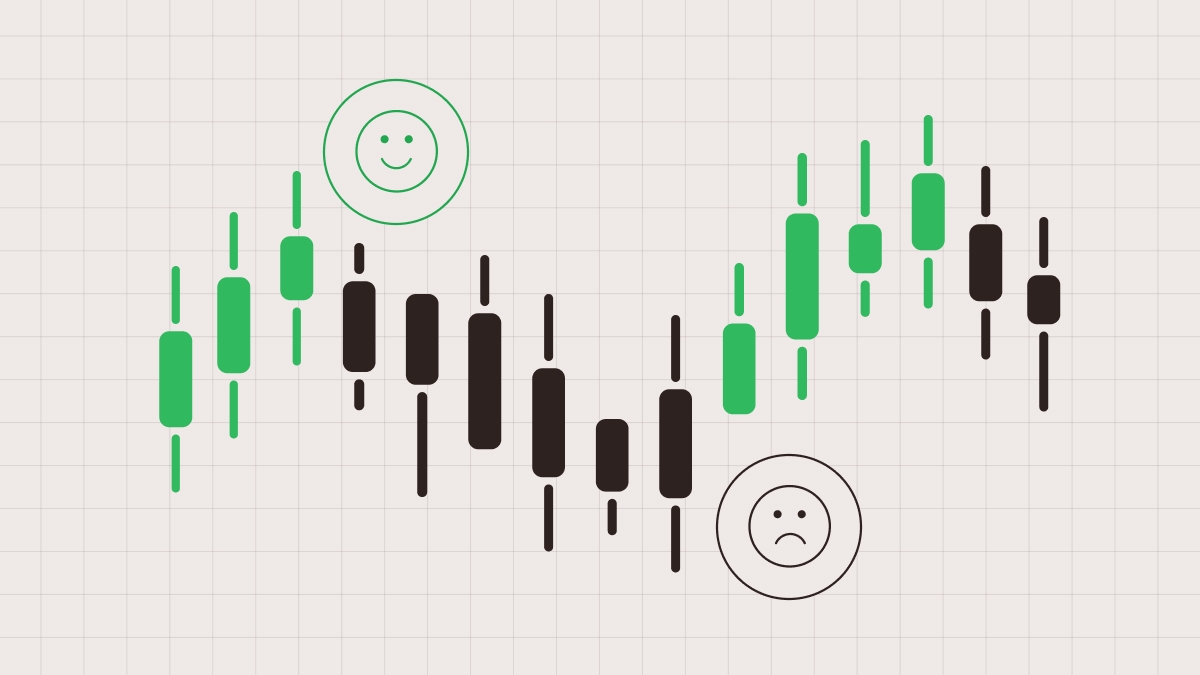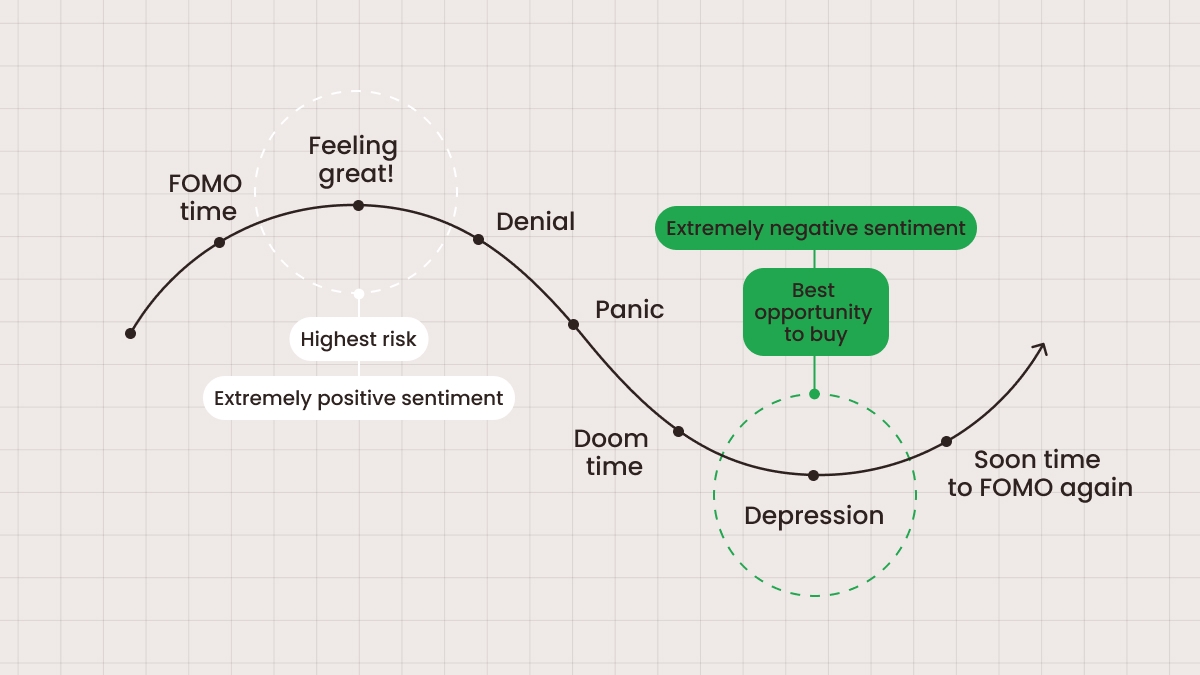
Aug 28, 2025
Psychology
What Is FOMO in Trading?

FOMO stands for “fear of missing out,” and it often shows up when you see a price running and feel you will miss the move. You jump in without a plan, with no setup and no confirmation, because emotion takes over.
This happens most during breakouts, fast news moves, a losing streak, or after scrolling through other people’s winning trades, and it usually leads to late and oversized entries with weak risk control.
How FOMO distorts decision asking
FOMO changes how you think and how you act. You stop following your plan and start following the crowd.
It often makes you increase position size when you feel excited or afraid. You enter late after most of the move, so risk grows while reward shrinks. You skip the checks in your rules because you are scared the move will run without you.
FOMO also distorts how you read charts. You start seeing patterns that are not there and jump between timeframes until one fits your bias. You close winning trades too early to feel safe, then chase the same move again at a worse price.
Use a short test before you place any order. Is this setup in your plan, and does the risk-to-reward ratio still make sense? Is the entry on time or is it late? If you cannot answer yes with a clear mind, you are not trading with a plan, you are trading on emotion.
Signs you are trading with FOMO
Common signs of FOMO signs to watch:
Position size grows with feelings, not logic
Entries are late and exits are early
Rules are skipped to enter now
Timeframes are changed to justify the trade
You feel relief after entry instead of calm confidence
Chasing price
You buy near the top after a sharp run or short during a steep drop. The entry comes from fear of missing out, not from a tested setup in your plan. If speed is the only reason to enter, skip the trade.
Changing risk mid-trade
You add size without a rule and move the stop because you hope for a bounce. Risk grows while logic fades and you lose the link to your plan. If a trade needs saving, the entry was bad and you ignored risk.
No clear reason
Before you place an order, you should be able to say in two short phrases why you’re entering. If you cannot do that, you are not following your rules and the trade is random. Wait until you have a clear plan, then act.
Copying others
You watch social feeds during market hours and mirror ideas with little context or research. You feel behind when you see profit posts and you chase to catch up with strangers. That urge is about status, not sound trading, and it obstructs your view.
Body signals
Your shoulders are tight when you have no position and you breathe fast under stress. If placing the order calms you, the action, not a clear plan, was the goal. Read the chart calmly first and click only after that.
Why FOMO is dangerous

FOMO does more than spoil one trade. It weakens your routine and makes you act before you think. Results slip because fast clicks replace careful checks. When you trade from fear, you enter without a clear reason. You buy or sell only because the price moves. Over time the average outcome falls and your account grows more slowly.
One loss often leads to a rush to win it back. You take the next trade too soon and skip your steps. The loss gets bigger while focus and patience fade.
Big position size with random entries creates wild swings in your balance. Missed rules and late entries turn small gains into large losses. You pay more in fees and stress while the account goes up and down without control.
FOMO also wastes time and energy. Many weak trades take your attention away from high-quality trades. Money sits in poor ideas, so you miss better chances when they appear. There is a cost that you cannot see on a statement. You start to doubt your plan and your own judgment. You keep changing tools and rules, and that makes your results even less stable.
How to avoid FOMO in trading
You cannot remove emotion, but you can plan for it. Make a short written plan that tells you when to enter, where to exit, how much to risk, and which markets to trade. Follow that plan and trade only when those clear conditions appear.
Wait for your plan to line up before you click. If the chart moves fast without your signal, let it go. A missed move is safer than a random entry that can lead to a big loss.
Set price alerts at your levels so the chart comes to you and you can stay calm. Decide on risk and reward before you place an order. If the stop is far and the target is near, skip the idea and wait for a better spot.
Create small rules that keep you steady. Use an entry checklist with three to five short questions. Add a rule that you do not chase after a big candle and wait two minutes before any market order.
Protect your attention while you trade. Stay off social media during your active session. Record each trade and review it later to learn and keep your plan strong.
How to overcome FOMO long-term
Quick tricks help for a day, but lasting change needs structure. Keep a journal and write after each trade. Note why you entered, what you felt, and which rule guided your choices.
Run a weekly review and sort every trade into planned or impulse. Count how many impulse trades lost money and write down the percentage they represent. Seeing the numbers in plain view cuts the urge to chase.
Study missed moves at a calm moment. Open old charts and check if your rules were present. Many will not fit your rules and that is fine. Define clear A-setups you will take and B-setups you will pass on.
Practice delay so you do not click too fast. Use a two-minute timer before any market order. Place an order only after your checklist is complete, your risk is fixed, and your exit plan is set.
Set daily limits so emotion cannot run the session. Use a cap on the number of trades and a cap on daily losses. When a limit hits, stop for the day and reset. Quiet days are part of the job, so use them to rest or to review notes.
You do not beat FOMO with willpower, you outgrow it by using a steady routine that you follow every day. The routine protects your focus and lets patience do the work.
Tools and habits that help
Results improve with clear rules and discipline, not more indicators. A few simple habits you use every day will keep you calm and help you follow your plan.
Trading journal. Write your plan, your reason for entering, the results, and one lesson you’ve learned. Do it right after the trade.
Entry checklist. Before you click, ask three things: Does it match my rules? Where is my stop? Where is my exit?
Daily risk cap. Set a limit for trades or money you can lose today. When you hit it, stop and return tomorrow.
Higher timeframes. Start with higher timeframes to see the main trend and levels. Use a lower chart only to time the entry.
Pre-session reset. Take five minutes before the London open for a short walk or quiet breathing. It clears your head and slows fast clicks.
Screenshots and review. Save a screenshot of any trade that felt like FOMO, before and after. Review them each week and note one fix.